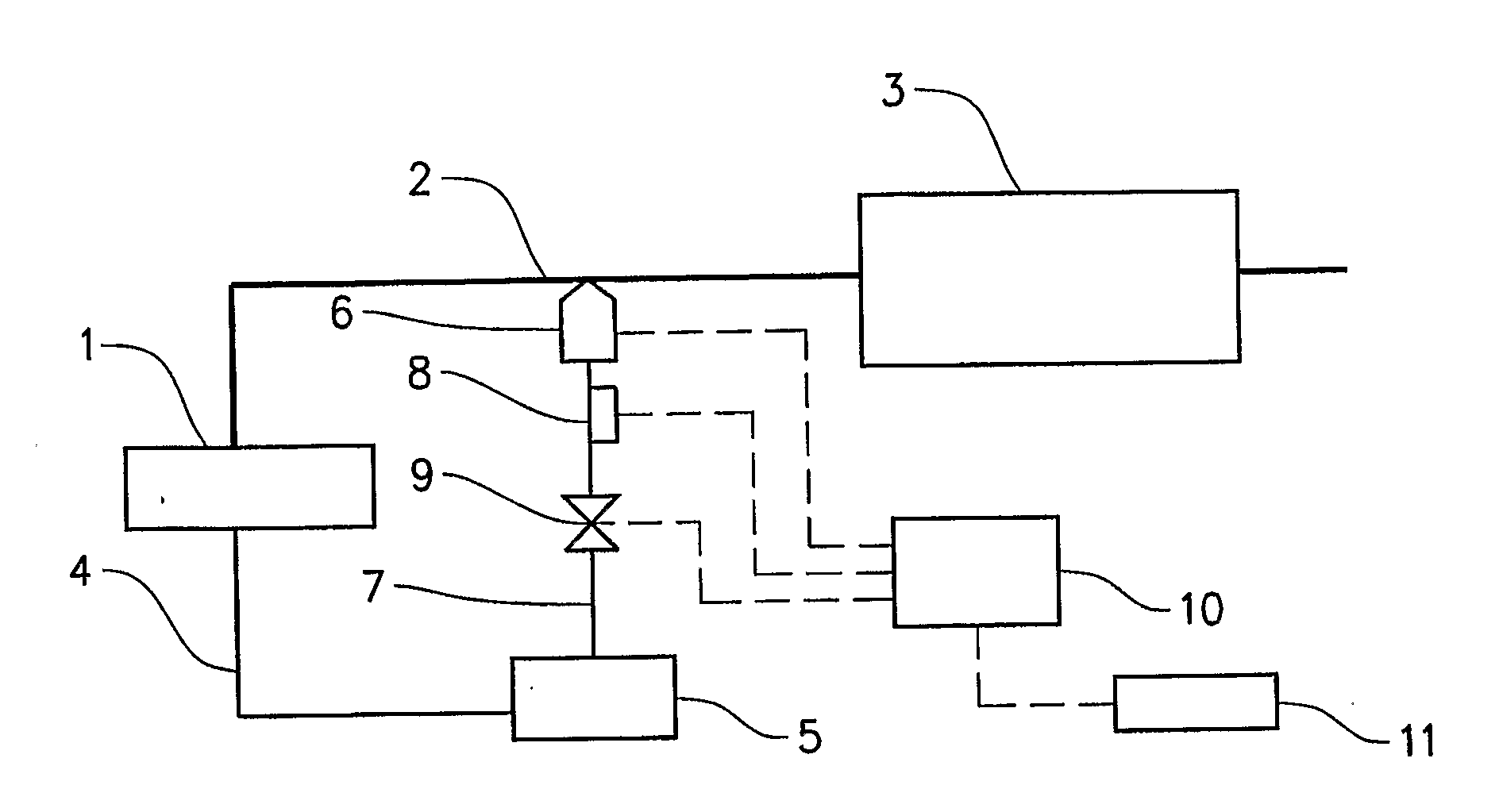Method and arrangement for monitoring of an injector
a monitoring method and injector technology, applied in the direction of instruments, liquid transfer devices, exhaust treatment electric control, etc., can solve the problems of not unambiguously pointing out what part of the purification system is not working in a sufficient way, deterioration of catalysts, and insufficient efficiency, so as to improve the nox-purification of exhaust gases, improve monitoring efficiency, and enhance the effect of system functionality
- Summary
- Abstract
- Description
- Claims
- Application Information
AI Technical Summary
Benefits of technology
Problems solved by technology
Method used
Image
Examples
Embodiment Construction
[0045]In FIG. 1 is very briefly described the different parts of an engine exhaust gas system comprising an After Treatment Substance Injection System (ATSIS) according to the invention. An internal combustion engine 1 is connected to an exhaust gas pipe 2 for collecting and guiding of exhaust gases from the engine to an exhaust gas treatment unit 3. The exhaust gas treatment unit 3 may for example be a filter, reduction or oxidation catalyst, NOx-trap or a combination of such treatment devices. Fuel for the engine 3 is supplied by a fuel conduit 4 from a fuel tank 5. An After Treatment Injector (ATI) 6 is located in the exhaust gas pipe 2 downstream of the engine 1 and upstream of the purification unit 3. The ATI 6 is connected to the tank 5 by means of an after treatment substance conduit 7 so as to allow a flow of substance from the tank 5 to the ATI 6. The flow of substance may be caused either due to a pressurized tank or a pumping arrangement. A pressure sensor 8 is located in...
PUM
 Login to View More
Login to View More Abstract
Description
Claims
Application Information
 Login to View More
Login to View More - R&D
- Intellectual Property
- Life Sciences
- Materials
- Tech Scout
- Unparalleled Data Quality
- Higher Quality Content
- 60% Fewer Hallucinations
Browse by: Latest US Patents, China's latest patents, Technical Efficacy Thesaurus, Application Domain, Technology Topic, Popular Technical Reports.
© 2025 PatSnap. All rights reserved.Legal|Privacy policy|Modern Slavery Act Transparency Statement|Sitemap|About US| Contact US: help@patsnap.com



